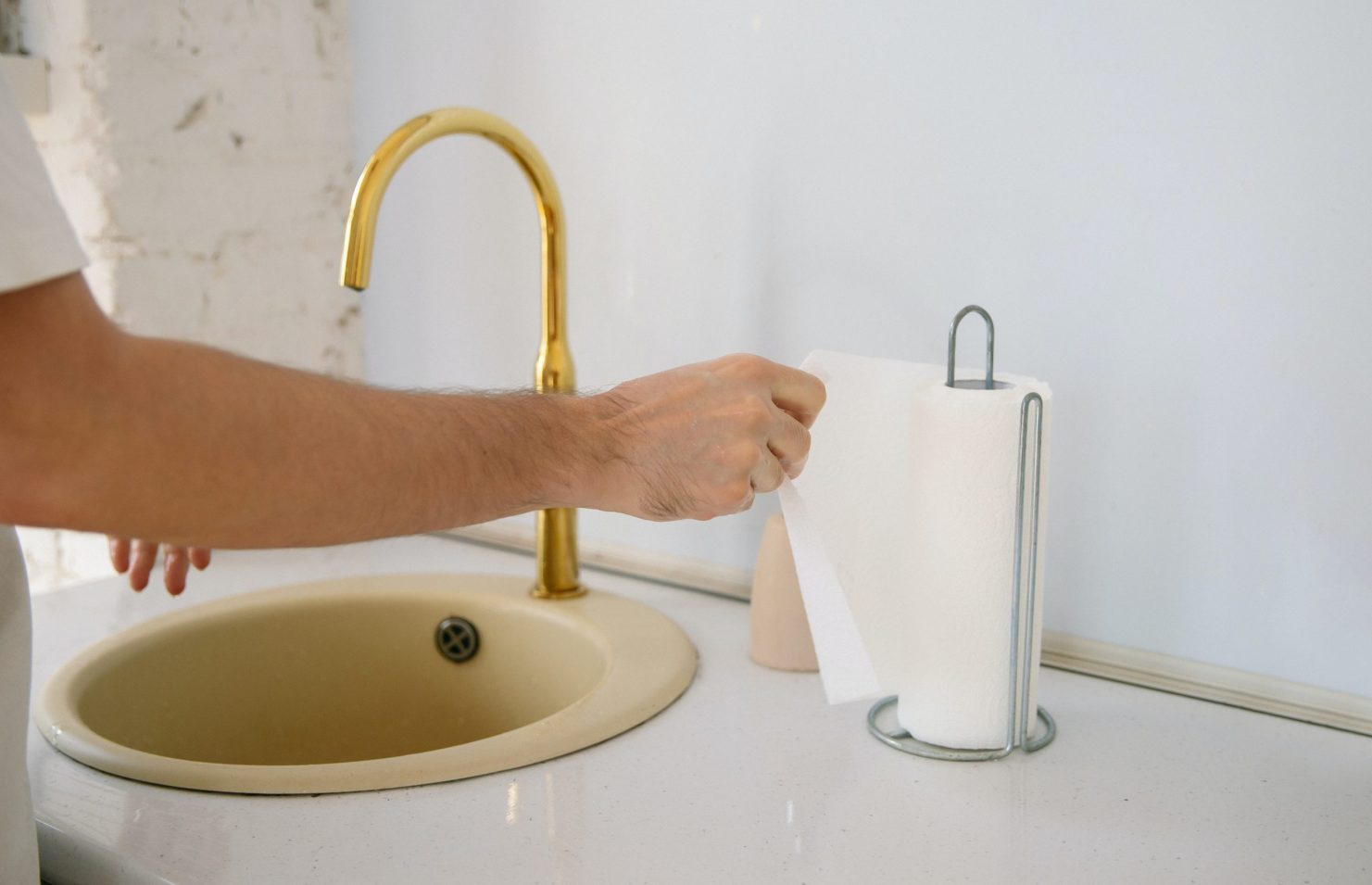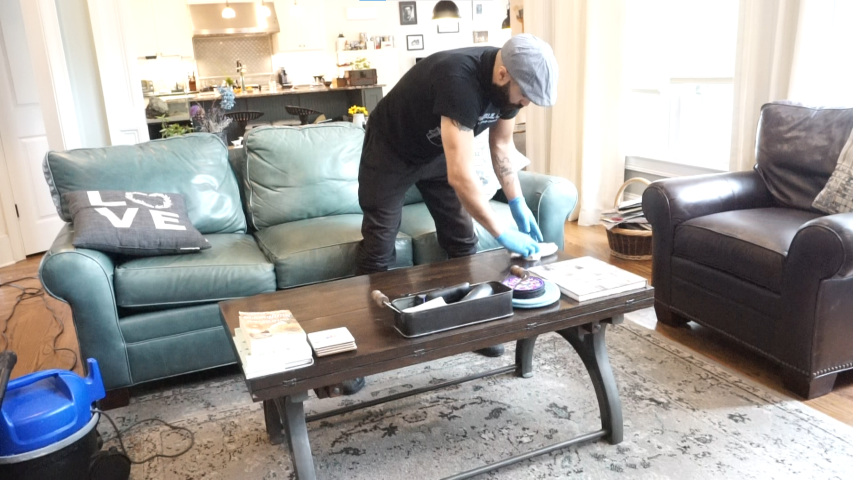When it comes to cleaning, convenience often leads us to grab the nearest paper towel. While these absorbent sheets have their uses, certain items and surfaces should never come in contact with them. In this blog post, we'll explore seven things you should avoid cleaning with paper towels, highlighting the potential damage to your belongings and the negative impact on quality and functionality. By making informed choices, you can ensure a cleaner, safer, and more sustainable cleaning routine.
Avoiding Damage to Delicate Electronics: Pitfalls of Using Paper Towels
From our smartphones and tablets to laptops and smartwatches, these devices require special care as they are not only expensive investments but also contain sensitive components.
Cleaning with paper towels poses the risk of screen scratching. Most screens today are made of glass or plastic, both of which can be easily scratched by the rough fibers of paper towels. These scratches can not only impair visual clarity but also affect touch sensitivity, making it less responsive.
Furthermore, paper towels often leave behind lint or fibers when used to clean electronic devices. These tiny particles can find their way into crevices, ports, and buttons, potentially causing operational issues or obstructing connections.
Additionally, some electronic devices have intricate circuitry that can be easily damaged by the abrasive texture of paper towels, leading to malfunction or permanent impairment.
To properly clean your delicate electronics without any harm, opt for microfiber cloths specifically designed for this purpose. Microfiber cloths are made of ultra-fine synthetic fibers that are gentle on surfaces and effectively capture dust, smudges, and fingerprints. Unlike paper towels, microfiber cloths are lint-free!
- When cleaning electronic devices, ensure that the microfiber cloth is clean and dry.
- Gently wipe the screen and other surfaces in a smooth, circular motion to remove smudges and dust particles.
- If needed, you can lightly dampen the cloth with distilled water or use specialized electronics cleaning solutions.
- However, avoid excessive moisture that could potentially seep into the device and cause damage.
Do not apply excessive pressure or use harsh chemicals that could harm the device. Always refer to manufacturer's guidelines for cleaning and maintenance recommendations specific to your device.
By using microfiber cloths, you'll ensure a thorough and safe cleaning experience for your precious gadgets.
The Importance of Gentle Cleaning for Fine Glassware and Delicate Crystal
When it comes to fine glassware and delicate crystal, preserving their beauty and ensuring their longevity is of utmost importance. These exquisite pieces deserve gentle handling, as they can be easily damaged by improper cleaning methods. Unfortunately, the commonly used paper towel is doing more harm than good.
Small fibers known as lint gets left behind and can cling to the surface. Additionally, the rough texture of paper towels can scratch delicate surfaces of glassware and crystal, causing visible damage that is difficult to repair.
To sustain continued beauty, it's essential to choose alternative cleaning materials. Soft, lint-free cloths or microfiber towels are ideal options for wiping these delicate surfaces. These materials are gentle and non-abrasive, allowing for effective cleaning without risk of scratches or lint residue.
- Start by ensuring that the cloth or microfiber towel is clean and free of any debris that could potentially scratch the surfaces.
- Gently wipe the glassware or crystal in a circular motion, applying light pressure to remove any smudges or fingerprints.
- Pay special attention to intricate patterns or delicate stemware to ensure thorough cleaning.
For stubborn stains or dried-on residue, you can dampen the cloth with warm water or use a mild dish soap specifically formulated for delicate items. Avoid using harsh chemicals or abrasive cleaners, as they can damage surfaces and diminish their luster.
After cleaning, carefully inspect the glassware or crystal for any remaining streaks or moisture. If needed, buff the surfaces with a dry, lint-free cloth to achieve a flawless, streak-free shine. Proper drying is crucial to prevent water spots or residue from forming.
Adding to that, avoid stacking glassware and crystal or exposure to extreme temperature changes, as these factors can also lead to damage.
Achieving Streak-Free Mirrors and Windows: Role of Microfiber Cloths as Alternatives to Paper Towels
While paper towels are often the go-to for cleaning glass surfaces, they can actually create more streaks and lint residue.
To achieve spotless mirrors and windows, try using microfiber cloths or a squeegee. When using a microfiber cloth, make sure it is clean and dry. Gently wipe the surface of mirror or window in a systematic motion, such as horizontal or vertical strokes, to ensure thorough coverage. Microfiber cloths are highly absorbent, so they can efficiently lift dirt and moisture from the glass, leaving it streak-free and crystal clear.
Another effective tool for cleaning mirrors and windows is a squeegee. This handheld tool typically consists of a rubber blade and a handle. Start by wetting the glass surface with a solution of water and a mild glass cleaner. Then, using the rubber blade of the squeegee, draw it across the glass in a smooth, sweeping motion, removing the cleaning solution along with any dirt or streaks. Wipe the blade after each pass to prevent transferring dirt back onto the glass.
Both microfiber cloths and squeegees offer efficient cleaning methods for mirrors and windows. Choose the tool that suits your preference and cleaning style, and you'll be amazed at the difference it makes in achieving sparkling clean glass surfaces.
These alternatives not only provide better results but also help reduce waste as unlike paper towels, microfiber cloths are reusable and squeegees require minimal additional cleaning products.
Avoid Abrasive Cloths and Paper Towels For Pristine Shine on Stainless Steel
Cleaning stainless steel appliances with paper towels may leave behind scratches or streaks, diminishing their sleek appearance. Instead, opt for non-abrasive cloths or microfiber towels specifically designed for stainless steel. Pair them with a mild cleaning solution or even vinegar for a chemical-free shine that preserves the integrity of your appliances.
These materials are gentle on the stainless steel surface, minimizing the risk of scratching or damaging the appliance.
To achieve a chemical-free shine on your stainless steel, dilute a small amount of the cleaning solution or vinegar with water and dampen the cloth or towel. Gently wipe the surface of the stainless steel appliance in the direction of the grain. This method will help remove fingerprints, smudges, and any other residues that have accumulated.
It's important to avoid using abrasive cleaners, scouring pads, or brushes, as these can scratch or damage the surface. Additionally, be cautious not to use excessive force or apply too much pressure.
After cleaning, you can buff the surface of the stainless steel appliance with a dry microfiber cloth for the polished look!
Preserving Beauty of Wooden Furniture: Soft Cloths and Proper Cleaning Techniques
Paper towels may seem harmless when cleaning wooden furniture, but their rough texture can actually cause microscopic scratches and wear down the protective finish over time. To maintain the luster and extend the life of your wooden furniture, use soft, lint-free cloths or microfiber towels.
Before using the cloth or towel though, ensure that it is clean and free from any debris that could potentially scratch the wooden surface. If necessary, lightly dampen the cloth with water to aid in removing stubborn dirt or stains. Avoid using excessive moisture, as it can potentially damage the wood. Always test any cleaning solutions on an inconspicuous area of the furniture before applying them to the entire surface.
When cleaning wooden furniture, it's important to work with the grain rather than against it. This helps to prevent any potential damage or further scratching. Gently wipe the surface of the furniture, paying close attention to intricate details or hard-to-reach areas. For those, you can use a soft brush or a cotton swab to remove dust or dirt buildup.
After cleaning, allow the furniture to air dry naturally. Avoid exposing the wood to direct sunlight or heat sources, as this can cause warping or fading.
Once dry, apply protective polish or a special wooden furniture wax to restore shine and provide extra layer of protection.
Safely Cleaning Sensitive Painted Surfaces with Specialized Wipes
Paper towels can be too abrasive and may damage the paintwork or leave fibers behind. Opt for soft, microfiber cloths or specialized paint-friendly wipes as they'll better preserve the vibrant colors and solidity of the surface.
Ensure that the cloth or wipe is clean and free from any debris prior to start. If necessary, lightly dampen the cloth or wipe with a mixture of mild soap and water. Avoid using excessive moisture to prevent it from seeping into the paint.
Gently wipe the painted surface, applying minimal pressure. Work in small sections, being careful not to scrub vigorously or use abrasive motions that could scratch the paint. For stubborn stains or dirt buildup, allow soap and water solution to sit on the surface for a few moments before gently wiping it away.
After cleaning, remove any soapy residue by wiping the surface with a clean, damp microfiber cloth. Ensure that the surface is completely dry to prevent water spots or streaks from forming.
For particularly sensitive or valuable surfaces, consider consulting with manufacturer's guidelines or seek professionals to ensure the most appropriate cleaning methods.
Caring for Camera Lenses: Optimal Cleaning Methods for Clarity
Camera lenses and other optical equipment demand extra care to maintain their clarity and functionality. Paper towels can compromise the quality of your shots by leaving scratches and lint. Therefore, you must invest in microfiber lens cloths or lens cleaning tissues, specifically designed to clean delicate optics.
These alternatives offer a safe and effective way to remove fingerprints, smudges, and dust particles from your camera lenses and other optical equipment.
- Before cleaning your camera lens, ensure that your hands are clean and free from oils or residue that could transfer onto the lens. Begin by using a blower brush or air blower to remove any loose dust or debris from the lens surface. This step helps to prevent particles from scratching the lens.
- Next, take your microfiber lens cloth or lens cleaning tissue and gently wipe the lens in a circular motion. Start from the center and work your way outwards. Avoid applying excessive pressure, as this can potentially damage the lens or shift the internal elements. If necessary, you can lightly dampen the cloth or tissue with a small amount of lens cleaning solution specifically formulated for optics.
- After cleaning, inspect the lens to ensure that it is free from smudges, streaks, or residue. If needed, you can repeat the cleaning process using a fresh area of the microfiber cloth or a new lens cleaning tissue.
It's important to be mindful of the lens coatings. Some lenses have special coatings that can be easily damaged by improper cleaning methods so always refer to the manufacturer's guidelines for any concerns or questions.
Sponge & Sparkle: Sensible Cleaning At It's Finest
Our team understands the importance of cleaning smart and are dedicated to providing top-notch cleaning services that cater to your needs. Glass, furniture, any other surfaces, you can count on us! We're experienced in handling a wide range of requests ranging in tedious detail and have the expertise to clean everything and anything in your home with upmost care.
When you're ready, reach out and let us take care of your cleaning!
Call (404) 633-9652 or request your free quote or go on our website to learn more.


